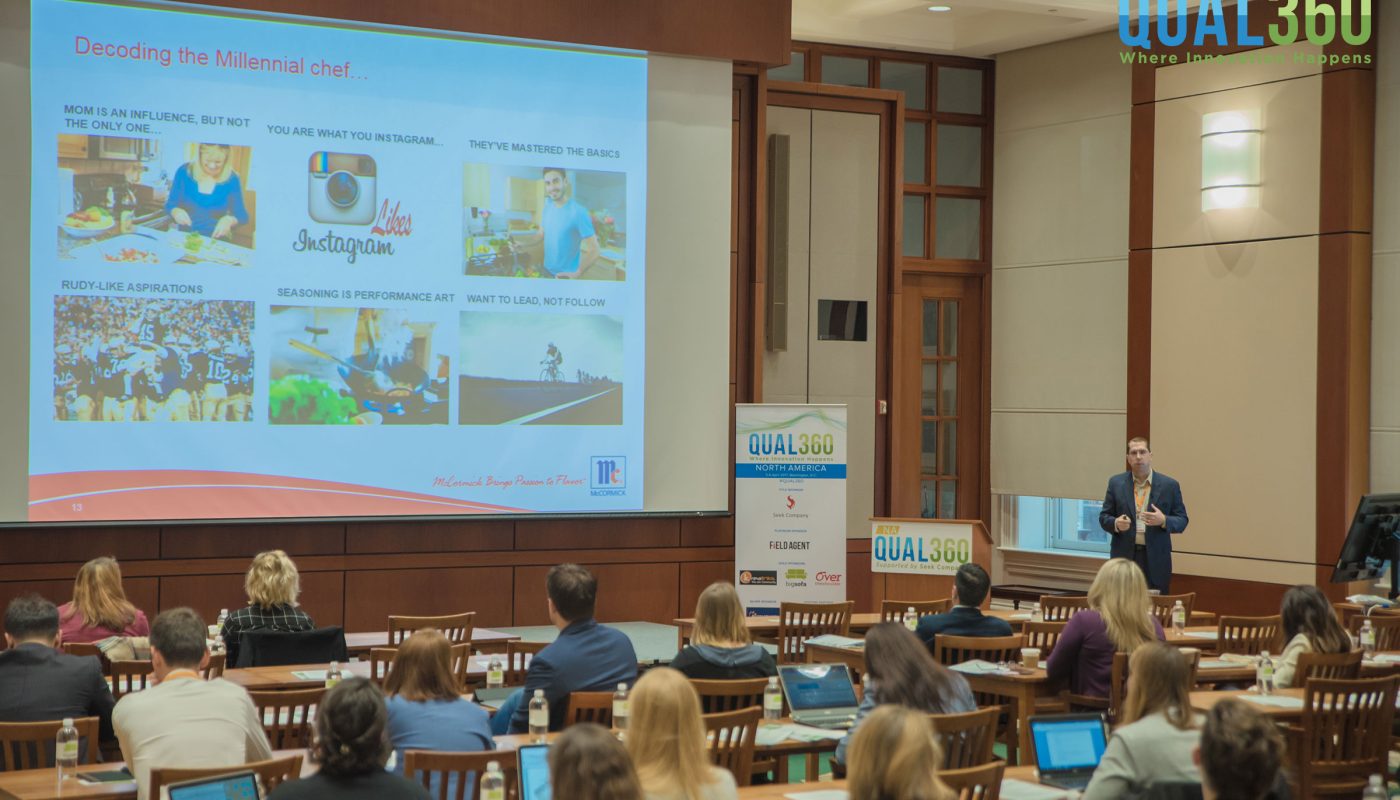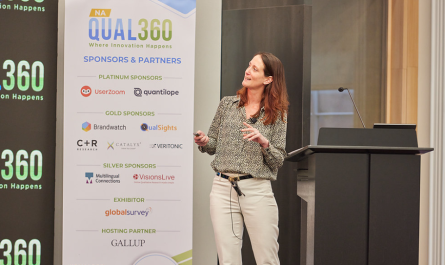
“Dude, where’s my Jetpack” asked Ross McLean, Co-Founder of Over The Shoulder – reminding the audience that while technology is developing fast, it will not replace humans any time soon. The good news however is that the smart use of technology can help researchers with many aspects of their work, from data collection to analysis and reporting.
Digital tools – how and when to use them
Tools are most powerful only when used right. Digital research tools are no different. So the first priority is to get over any kind of presumptions when selecting the right tool for your research. Fieldagent uncovered some surprise findings when they analysed the attitudes of Millenials towards video. The assumption was that video would be the channel of choice for this audience. Surprisingly, only 28% of respondents were comfortable submitting video feedback. On the positive side, the videos submitted were much more powerful than the text responses, providing on average 3 times more words. Fieldagent’s Renee Brandon recommends video as a tool but has two useful tips for researchers: let respondents show rather than tell – and incentivise wisely to get quality responses.
Big Sofa’s Emily Grogan also called for the smart use of (video) technology in qualitative research to harvest richer human connections. With the help of increasingly sophisticated software tools, video can become a currency for expression and communication. Sentiment analysis, facial coding, transcriptions can be captured at once and help researchers to become better observers.
Slow it down
Kadence investigated the readership of Dow Jones’ “Mansion Global” website through an online community. Rather than speeding up the gathering of results online, the team decided to spend more time with respondents in order to generate trust and facilitate more elaborate answers. Technology here helped to “shrink the world to a manageable size”, allowing users to share their stories while preserving a degree of anonymity. Contrary to initial presumptions, the team found High Net Worth individuals to be highly engaged and interested respondents.
Kantar Public, together with Krealinks also leveraged the power of online communities – in this case to manage a multi-country, multi-language community for the European Union’s Horizon2020 project. Thirty simultaneous communities with 10 languages were managed and moderated through a centralized hub from which all moderators worked. This allowed moderation to be consistent across communities and also quick responses to any unexpected events.
Man against machine
Or better man with machine! Paul Hudson from Flex MR and Tom de Ruyck, Insites Consulting explored the role of chat bots and artificial intelligence in qualitative research. Taking an optimistic view, they also see technology as a great enabler and tool for researchers. Paul showed a number of examples from chatbots and even had the audience trying some of them straight away.
Chatbots are slowly moving from their application in mainstream business to more sophisticated tasks such as medical advise and research. Even though with bumps in the road (the first of Facebook’s chatbot platforms failed to fulfil 70% of requests without human intercession) now over 35,000 messenger chatbots have been created. The above failure rate however is a reminder that there are still limitations to the technology behind many bots, mainly a lack of true machine learning.
Automation on the other hand can bring out a truly big qual benefit. Using a chatbot on an existing messenger service for example could enable you to have (theoretically) unlimited diary interviews at once, without the need for extra manpower. It will however require very good planning with lots of bespoke copywriting and logic.
De Ruyck also argued that automation does not need to replace but rather complement labour by increasing efficiency and output. Insite’s chatbot “Galvin” draws on the agency’s database of consumer insights, key facts and key figures. The database is curated by humans but customized for clients, based on existing research and data. Surprisingly, one of the key features of the chatbot is to have a personality, which helps to increase engagement and make interactions more fun.
Undoubtedly, technology is already and will continue to have a huge impact on qualitative research. Rather than reducing the role of the researcher, there is a strong consensus that technology can help to increase efficiency, provide new levels of communication and enable researchers to produce better results by allowing them to focus on their core goals.
If you have missed Qualitative360 so far, your last chance to join the family this year is coming up on October 8&9 at Qual360 APAC in Singapore!











 by
by 

